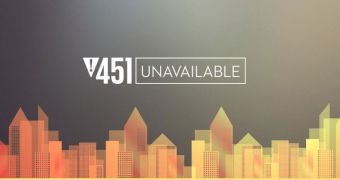The Internet Engineering Steering Group (IESG) has approved the usage of a special HTTP error code on Web pages that have been taken down at the behest of a local government, court order, DMCA, or for other legal reason.
The initiative to introduce a special server error message for censored content came from Tim Bray, one of XML's co-creators. Mr. Bray submitted a draft for a new error code to the Internet Engineering Task Force (IETF) HTTP Working Group in August 2013, which its leadership, the IESG, approved yesterday.
The error code's number, 451, comes from Ray Bradbury's book "Fahrenheit 451," a novel describing a dystopian future where authorities burn books to prevent and suppress any dissenting or opposing ideas. 451 is also the temperature, on the Fahrenheit scale, at which paper ignites.
IETF didn't want to approve the 451 code initially
"Initially, I and some others pushed back. [...] While 451 met many of the guidelines for new status codes (such as being potentially applicable to any resource), there wasn't any obvious way for machines to use it," said Mark Nottingham, chair of the IETF HTTP Working Group and member of the W3C TAG, describing some of the initial drawbacks of adopting error 451. "This was something you could do in a header or the message body of a 403, so it didn't seem to justify expending a status code."
What made the IETF and IESG change their minds was the early and experimental adoption of the status code as it was, in its raw stages. The large number of sites showing the 451 error convinced the IESG that the code was needed.
Currently, the 451 error code has only been approved, and it will be some time before it reaches an implementation level as an RFC.
The downside of the whole situation is that governments, just as they can force site owners to take down content, can also disallow the usage of the 451 code, so they can hide what they're doing.

 14 DAY TRIAL //
14 DAY TRIAL //